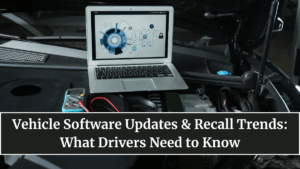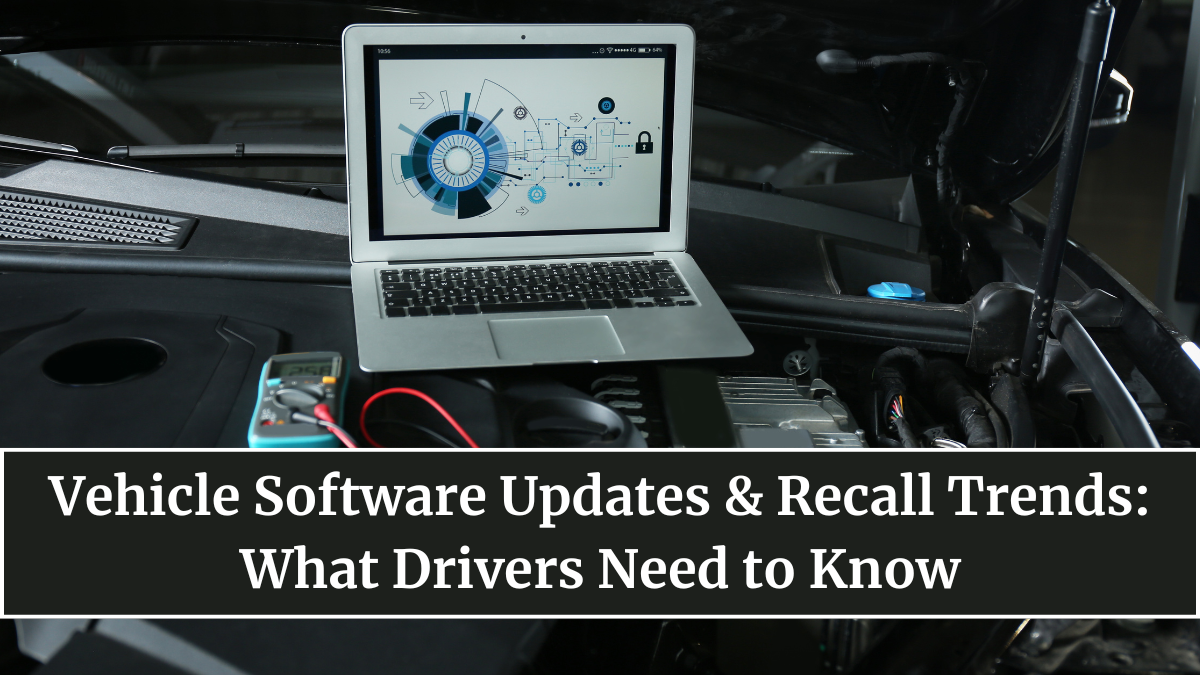Cars are no longer just machines — they are computers on wheels. In 2025, most vehicles rely on millions of lines of code to control everything from air conditioning to steering. But with this digital transformation comes a new challenge: software updates and recalls are now as crucial to car maintenance as oil changes once were.
The modern automobile is undergoing a paradigm shift where firmware patches, over-the-air (OTA) updates, and cybersecurity recalls are the new norm. These updates are transforming how manufacturers ensure safety, improve features, and maintain long-term performance.

The Digital Backbone of Modern Vehicles
Today’s vehicles contain 50 to 100 electronic control units (ECUs), each responsible for specific systems like braking, navigation, and driver assistance. These units communicate through complex networks and depend on continuously evolving software.
As cars get smarter, automakers use cloud-based systems to monitor performance remotely and push OTA updates to fix bugs or enhance features. This means car owners now experience software updates similar to smartphone users — instant improvements without visiting a service center.
The Rise of Over-the-Air (OTA) Updates
Over-the-air (OTA) technology allows manufacturers to deliver software improvements wirelessly. Tesla pioneered this model, but by 2025, almost every major brand — including Ford, BMW, Hyundai, and Tata Motors — uses OTA systems.
Key Benefits of OTA Updates:
-
Instant Fixes: Bugs or performance issues can be resolved remotely.
-
Feature Upgrades: New driving modes, interface redesigns, and energy optimization can be added without hardware changes.
-
Reduced Recalls: Manufacturers can deploy digital fixes instead of costly physical recalls.
-
Enhanced Safety: Updates can address vulnerabilities or enhance advanced driver-assistance systems (ADAS).
For example, an update may recalibrate braking sensitivity, enhance voice recognition, or add new battery management features overnight.
How Software Recalls Differ from Traditional Recalls
In traditional recalls, vehicles were brought back to service centers for mechanical fixes. Software recalls, on the other hand, involve firmware patches to correct bugs, miscalculations, or vulnerabilities that could impact safety or performance.
Examples of Software Recalls in 2025:
-
Tesla and Hyundai: Issued updates to address issues in autopilot and lane assist systems.
-
Toyota: Fixed engine control software causing unexpected stalling in hybrid models.
-
BMW: Released patches for infotainment crashes in iDrive systems.
These recalls are often resolved remotely — saving millions in logistics and downtime while improving user convenience.
The Aftermarket’s Role in Vehicle Software
The aftermarket automotive industry is also adapting to the software era. Independent garages now handle firmware reprogramming, ECU remapping, and diagnostics, using authorized digital tools.
However, unauthorized modifications or “tuning hacks” can cause:
-
Warranty voids due to tampering with core systems.
-
Cybersecurity vulnerabilities exposing vehicle data.
-
Regulatory non-compliance in emissions or safety standards.
Therefore, manufacturers are pushing secure update ecosystems that verify authenticity before installation, ensuring the safety and integrity of each patch.
Common Reasons for Software Recalls
-
Autonomous Feature Malfunctions — Glitches in adaptive cruise control or lane detection systems.
-
Battery Management Errors — Miscalculations in EV range or charging rates.
-
Connectivity Bugs — Bluetooth, GPS, or infotainment freezes impacting driver assistance features.
-
Sensor Calibration Failures — ADAS systems requiring realignment due to software mismatches.
-
Cybersecurity Breaches — Patches to fix exploitable vulnerabilities in vehicle networks.
As digital infrastructure expands, software recalls are expected to outnumber mechanical recalls by 2027.
The Impact on Drivers and Ownership
For drivers, the new update-driven model brings convenience but also responsibility. Cars now require digital literacy — understanding update alerts, permissions, and potential downtime.
Benefits for Drivers:
-
Constant performance improvements.
-
Reduced workshop visits.
-
Extended vehicle lifespan through software optimization.
Challenges:
-
Data privacy concerns during update transmissions.
-
Connectivity dependency — vehicles need stable networks for smooth OTA operations.
-
Incompatibility risks for older models.
Owners must now treat their cars like smartphones — always connected, always updating, and always evolving.
India and Global Developments
Globally, regulators are enforcing stricter software update compliance for safety-critical functions. The U.S. NHTSA and European Union now require automakers to maintain digital transparency for every update.
In India, the Ministry of Road Transport & Highways is framing new policies to ensure:
-
Secure OTA deployment in locally manufactured vehicles.
-
Certification of third-party software providers.
-
Standardization of diagnostics for EV and hybrid models.
This will help prevent unregulated software modifications that can compromise safety and emissions.
The Future of Automotive Software Maintenance
The next phase of evolution will see:
-
AI-driven update management, where cars predict and download patches automatically.
-
Predictive recall alerts before faults occur.
-
Unified software ecosystems allowing cross-brand update compatibility.
-
Subscription-based feature models, letting users activate premium features on demand.
Soon, “updating your car” will be as common as updating your phone — ensuring vehicles stay safe, efficient, and up to date throughout their lifespan.
FAQs
What is a vehicle software update?
It’s a digital patch sent by manufacturers to improve performance, fix bugs, or enhance safety features without physical service visits.
How do over-the-air updates work?
They use secure wireless communication to install new firmware directly into your car’s systems, similar to smartphone updates.
Can a software recall be fixed remotely?
Yes. Many software recalls today are resolved via OTA updates without requiring drivers to visit a workshop.
Are software updates free?
Most safety and performance updates are free, though some premium feature unlocks may require paid subscriptions.
Do software updates affect warranty?
Official updates do not affect warranties, but third-party or unauthorized modifications can void them.
Click here to know more.
